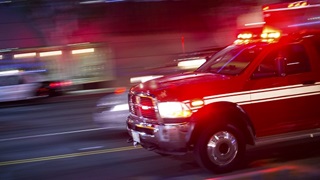Heavy-duty training for highway rescue
Prairie firefighters get hands-on education for big-rig accidents
It’s like a scene from the reality TV show Highway Thru Hell. A car and a large semi-trailer truck have just collided and rolled on the highway, leaving the driver of the smaller vehicle trapped underneath.
In a situation like this, first responders need to be on their game--quickly sizing up the scene for hazards, securing the vehicles, and calling for backup support. Each minute that ticks by can mean the difference between life and death.
“When you’re dealing with heavy vehicle accidents, things quickly get hectic. You’ve got to be ready and know how to take charge promptly,” says Dean Brooker, training coordinator for the Oak Lake Mutual Aid District, a group of nine volunteer fire departments across southwest Manitoba and southeast Saskatchewan committed to helping each other in emergencies.
Preparing local firefighters for big rig accidents is a priority for Brooker. In recent years, there’s been a steady growth of tanker truck traffic on regional roads, due to ongoing industrial development.
“So far we’ve not had a lot of incidents with heavy vehicles, but it’s important to be prepared,” says Brooker, who’s also assistant deputy fire chief at the Pipestone-Albert District, MB, Fire Department.
This spring, Brooker organized a jumbo-sized safety boost in the region, with a two-day big rig rescue training course for 25 district firefighters. The course—the first of its kind to be offered to firefighters in Manitoba—was hosted by Spearing Service, an oilfield trucking company, at its operations yard near Reston, and supported through an $8,000 Safe Community grant from Enbridge.
Over the two days, the firefighters were exposed to a variety of rescue scenarios. In one case, a tanker filled with water was rolled onto a car to simulate an accident scene. Firefighters had to work together quickly to stabilize and raise the tanker, and then use hydraulic rescue tools to remove a crash dummy from the smaller vehicle. Instructors guided the group through specialized techniques, including the use of blocks and mechanical strut systems to safely lift the vehicles.
“This was advanced training that allowed the firefighters the opportunity to learn new techniques, tools and technologies specific to big rig rescues,” Brooker says of the course led by Randy Schmitz and James Wilson, two Calgary Fire Department instructors specializing in large vehicle extrication training.
In the past, Enbridge’s Safe Community grants have helped purchase new vehicles and equipment for fire departments in the region.
The Safe Community program, though, also extends to training and education—and Les Scott, a Regina-based senior advisor of public affairs at Enbridge, collaborated with Brooker to plan and stage this valuable two-day drill.
“This course gave participants the hands-on opportunity to gain experience on equipment and techniques in a controlled manner,” notes Scott. “This is training they will be able to take back to their departments to help save even more lives in the future.”










